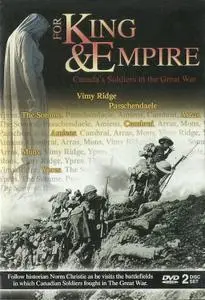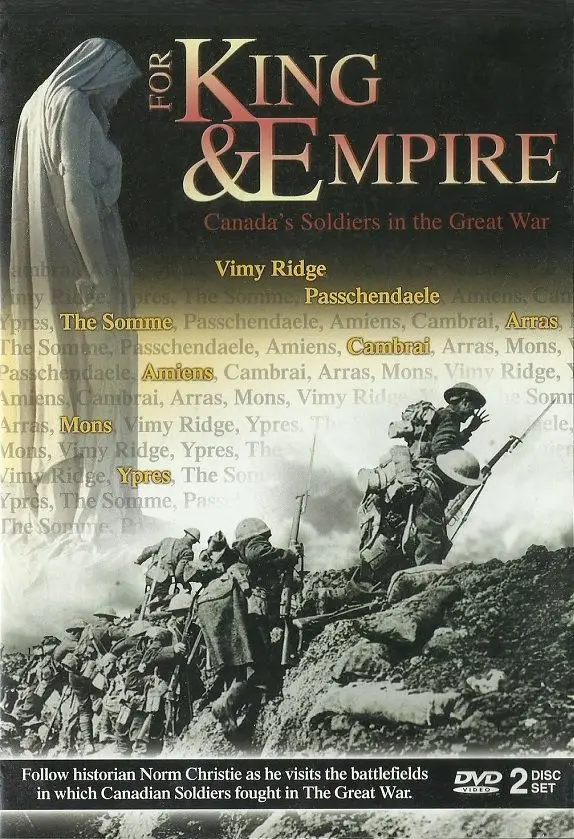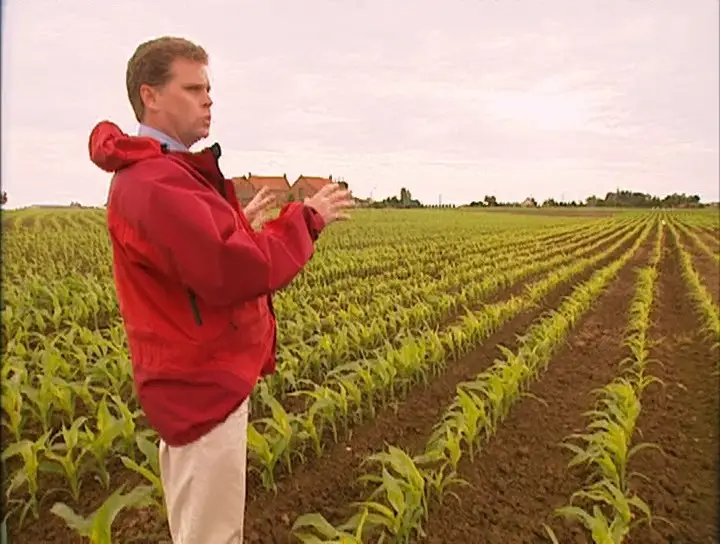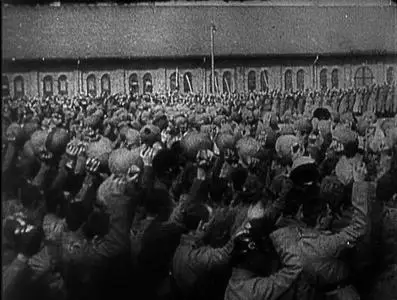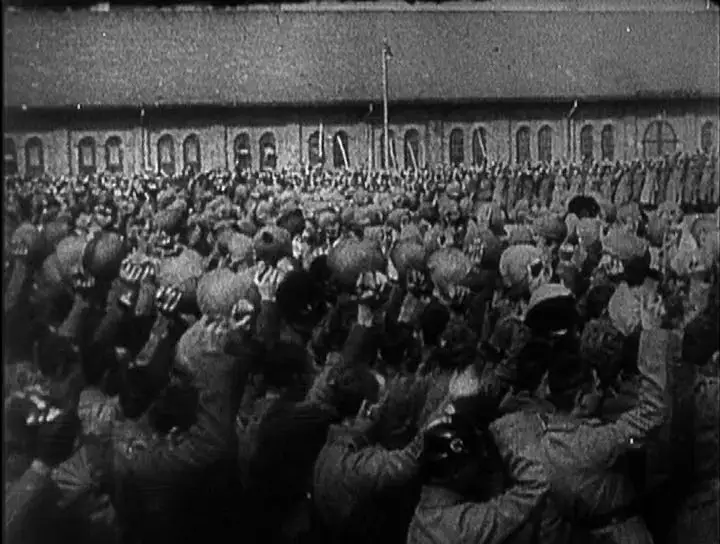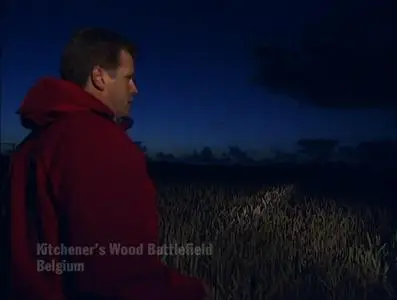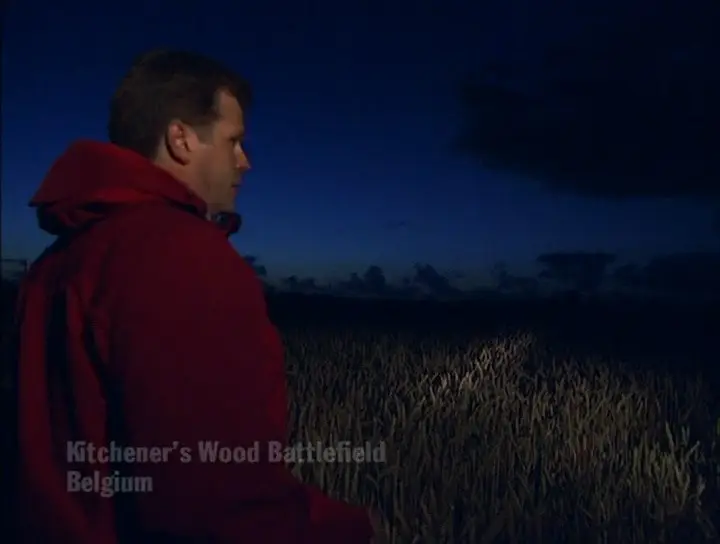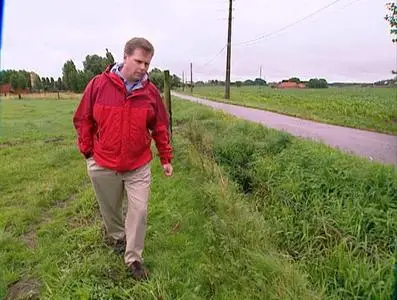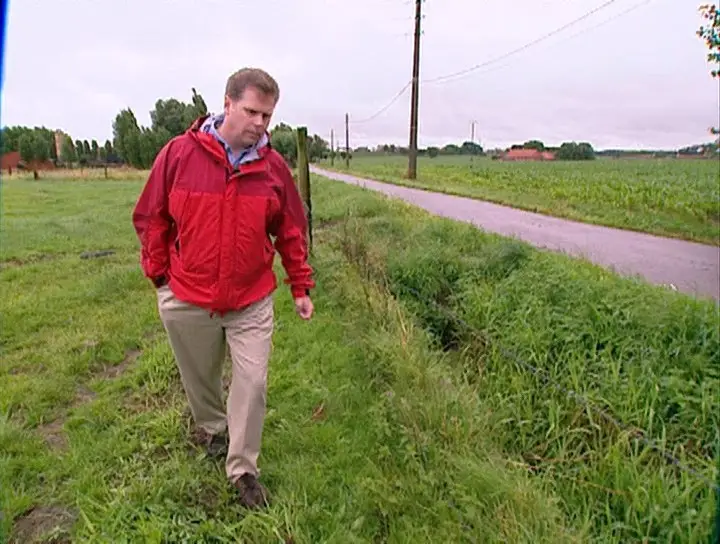History Channel - For King and Empire: Canada's Soldiers in the Great War (2001)
DVDRip | 720x544 | .MP4/AVC @ 1980 Kbps | 6x~46min | 4.34 GiB
Audio: English AC3 224 kbps, 2 channels | Subs: None
Genre: Documentary
With military historian Norm Christie as our guide, we explore the battlefields, cemeteries and monuments of the First World War. The men who fought tell their stories, and we discover how the naive, amateur soldiers of 1914 became, by 1918, perhaps the most feared, efficient and deadly Allied fighting machine on the Western Front: the "Canadian Corps."
FOR KING AND EMPIRE tells the stories of ordinary Canadians who fought extraordinary battles during the First World War. Six episodes represent a turning point in the Great War: Ypres, the Somme, Vimy, Passchendaele, the Battles of the Last Hundred Days, and the Legacy of the War. By depicting walking tours of each battleground, For King and Empire explores the significance of the battle and what was at risk, the initial strategies and what actually transpired.
In six harrowing hours rife with veteran testimonies and battlescarred films, Canadian historian Norm Christie tours WWI battlefields on foot, including Ypres, The Somme and the once blood-soaked Vimy Ridge to relive the horrors of what was known as The Great War. Canadian regiments played key roles in pivotal moments, and this well-researched series functions both to record the memories of the living and, perhaps, raise the ghosts of some of the ten million souls lost in the terrible trenches. Based on the series of books "For King and Empire" by Norm Christie.
A Breakthrough Entertainment Inc. Production in Association with History Television, Bell Broadcast, Knowledge Network and ACCESS - The Education Station
Part 1: Baptism of Fire: The Canadians at Ypres - 1915
This episode follows the early development of the Canadians, from enthusiastic volunteers in 1914, to their first taste of battle, confronting the Germans and poison gas in front of the ancient Belgian city of Ypres.
When England declared war on Germany in August 1914, Canada immediately pledged 20,000 troops. Army enrollments were high and the troops set off after basic training acting like they were going on holiday. Immediately on arrival, the troops were sent to hold the line at Ypres and came under heavy German artillery fire.
The Germans were also to introduce their latest weapon - chlorine gas. The men were unprepared for this type of weapon - they had no gas masks - and may took to urinating in a handkerchief and placing it over their nose and mouth. In 4 days, there were over 2000 casualties. In the end, the German's were stopped but at a great price.
Part 2: Slaughter and Sacrifice: The Canadians at the Somme - 1916
As more Canadians arrive on the Western Front, they are sent to fight in one of the most blood-thirsty battles of the Great War, The Battle of the Somme. In two months the Canadians lose 24,000 men to gain 4 miles of destroyed French farmland.
In July 1916, British commander in chief General Sir Douglas Haig launched a major offensive along the Western Front. On July 1, after an 8 day artillery barrage, 120,000 men launched the attack and the Battle of the Somme began. The barrage had little effect and British troops were slaughtered. Among those killed included 700 Newfoundlanders who died less than 100 meters front their trench. There were 60,000 casualties the first day but the battle would continue for another 5 months with more than 100,000 casualties in total.
Canada's three divisions - 60,000 men - were redeployed from Ypres to the Somme. Ordered to capture the village of Courcelette the Canadians were successful but at a high cost in lives and the complete destruction of the village. Their next objective was Regina Trench and several attempts were made to take it. On October 21 the fourth attempt proved more successful. They slog to victory, and suffer 25,000 casualties on the battlefield known as the graveyard of armies.
Part 3: Storming the Ridge: The Canadians at Vimy - 1917
Moving north after the charnel house of the Somme, the Canadians plan for their most difficult operation of the war to date; the attack on the German fortress position of Vimy Ridge. Thought to be impregnible, the Canadians would have to plan and execute to perfection to snatch this vital position from the Germans. Nobody thought they could do it.
In 1917, Vimy was a barren fortress of the German army. Many thought it would never be taken and the Germans never dislodged. All 4 Canadian divisions arrived in late 1916 after the bloodbath they faced at the Somme. In holding the ridge, it is estimated that the Germans suffered 140,000 casualties. Fighting was not expected until the spring but the men knew what was to come.
The opposing forces were no more than 100 yards apart and the attack is planned for Easter 1917. Following a two week artillery barrage 300,000 men attacked, with Canadian troops numbered 8,000 in that initial offensive. It is one of the most brilliantly planned attacks of the war. Sweeping to victory, and consolidating their gains, the Canadians establish their reputation as elite troops; but at a cost of 21,000 dead, wounded, and missing.
Part 4: Slaughter in the Mud: The Canadians at Passchendaele - 1917
After gaining a reputation for excellence at Vimy, their new battlefield, the sodden mud of Flanders, would be their greatest challenge of the war. Attacking in deplorable conditions, against a well-entrenched enemy, planning could only go so far. At Passchendaele, only courage and tenacity could win the day.
In the summer of 1917 Field Marshal Sir Douglas Haig, the British Commander, planned to launch his greatest offensive yet with the goal of liberating northern Belgium. Attacking from the city of Ypres, the battle began with a 10 day artillery bombardment but amid the pouring rain, the attack founders in a sea of mud. By October, the British have lost nearly a quarter of a million soldiers and the key objective, Passchendaele Ridge, has not been reached.
The Canadian Corps is given the task of taking that position. In the attack, the Canadians lost one man for every meter gained - with over 2000 meters to go. Passchendaele was taken on schedule, making it a great victory. In total, there were 16,000 Canadian casualties.
Part 5: Masters of War: Canadians in the Last 100 Days - 1918
After 18 months of great victories the Canadians would be asked to break the back of the German Army. In three major battles; Amiens, Arras and Cambrai, the Canadian Corps cracks the German line, and forces the Germans back. On the run, the Germans are forced to end the war, with the Canadians hot on their heels. At Mons, where the war started for the British Army in 1914, the upstart Canadians are the ones to recapture the famous city on the last day of the War.
The victory over Russia in the East now allows the Germans to transfer thousands of troops to the Western Front. Masters of war shows how in March 1918, the Germans launch a great offensive in France and Belgium, sweeping aside British and French armies, and almost winning the war. In advancing, the Germans have avoided the Canadian Corps, viewed as perhaps the deadliest force on the Front. The Canadian commander, Arthur Currie, moves his 100,000 troops in secrecy to Amiens, where the Allies will stage their counteroffensive.
On August 8, the Allies strike back, and the attack, spearheaded by the Canadian Corps, becomes the greatest British victory yet, reversing the tide of war. They secure major victories in battles on the 8th and 9th of August, and in the next 100 days, the Canadian Corps wins seemingly impossible victories at Arras, at the Canal du Nord, and at Cambrai, driving the Germans out of France to the Hindenburg Line. On the last day of the war, the Canadian Corps liberates the Belgian city of Mons, where British and German troops first fought in 1914. The armistice took effect the next day. By 1918, the Canadians have become the spearhead of victory, masters of war.
Part 6: Shadows of the Great War
This episode looks at the aftermath of the war; the building of the cemeteries, the unveiling of Vimy Ridge in 1936, the plight of the returned veterans both in Canada and Germany, and finally the most hideous legacy of the Great War, the start of the Second World War, and the lessons of war must be learned again.
Shadows of the Great War relates how when the war ends on November 11, 1918, the world rejoices, but 10 million soldiers are dead and 20 million maimed.. Along the old Western Front, during the 1920s men turn to the gruesome task of exhuming and reburying hundreds of thousands of bodies. While Canadians in the 1920s and 30s argue over the cost of building memorials to their soldiers, in Germany one veteran, embittered by defeat, creates a new mass movement. His name is Adolf Hitler, and his party - the Nazi Party.
In 1939, Canada is once again at war and many of the men who fought the First War live to see their sons die in the Second. In our travels along the Western Front, we will have voyaged into the past, discovering what remains of those men - who fought For King and Empire.
General
Unique ID : 267643072689528280197664587602360354436 (0xC95A2E49916283D664D5074AFFC54684)
Complete name : For.King.and.Empire.Canadas.Soldiers.in.The.Great.War.1of6.Baptism.of.Fire.mkv
Format : Matroska
Format version : Version 4 / Version 2
File size : 741 MiB
Duration : 46 min 57 s
Overall bit rate : 2 206 kb/s
Video
ID : 1
Format : AVC
Format/Info : Advanced Video Codec
Format profile : High@L4
Format settings, CABAC : Yes
Format settings, ReFrames : 12 frames
Codec ID : V_MPEG4/ISO/AVC
Duration : 46 min 57 s
Bit rate : 1 980 kb/s
Width : 720 pixels
Height : 544 pixels
Display aspect ratio : 4:3
Frame rate mode : Constant
Frame rate : 29.970 (30000/1001) FPS
Color space : YUV
Chroma subsampling : 4:2:0
Bit depth : 8 bits
Scan type : Progressive
Bits/(Pixel*Frame) : 0.169
Stream size : 665 MiB (90%)
Writing library : x264 core 66 r1092 60f4cd8
Encoding settings : cabac=1 / ref=12 / deblock=1:-2:-1 / analyse=0x3:0x133 / me=tesa / subme=8 / psy_rd=1.0:1.0 / mixed_ref=1 / me_range=32 / chroma_me=1 / trellis=2 / 8x8dct=1 / cqm=0 / deadzone=21,11 / chroma_qp_offset=-4 / threads=12 / nr=0 / decimate=1 / mbaff=0 / bframes=8 / b_pyramid=1 / b_adapt=2 / b_bias=0 / direct=3 / wpredb=1 / keyint=250 / keyint_min=25 / scenecut=40(pre) / rc=2pass / bitrate=1980 / ratetol=1.0 / qcomp=0.60 / qpmin=10 / qpmax=51 / qpstep=4 / cplxblur=20.0 / qblur=0.5 / vbv_maxrate=25000 / vbv_bufsize=14000 / ip_ratio=1.40 / pb_ratio=1.30 / aq=1:1.00
Default : Yes
Forced : No
Audio
ID : 2
Format : AC-3
Format/Info : Audio Coding 3
Format settings, Endianness : Big
Codec ID : A_AC3
Duration : 46 min 57 s
Bit rate mode : Constant
Bit rate : 224 kb/s
Channel(s) : 2 channels
Channel positions : Front: L R
Sampling rate : 48.0 kHz
Frame rate : 31.250 FPS (1536 spf)
Bit depth : 16 bits
Compression mode : Lossy
Stream size : 75.2 MiB (10%)
Language : English
Service kind : Complete Main
Default : Yes
Forced : No
Menu
00:00:00.000 : :Chapter 1
00:12:50.133 : :Chapter 2
00:12:50.533 : :Chapter 3
00:25:08.699 : :Chapter 4
00:25:09.099 : :Chapter 5
00:30:28.666 : :Chapter 6
00:30:29.066 : :Chapter 7
00:36:12.166 : :Chapter 8
00:36:12.566 : :Chapter 9
Screenshots:


